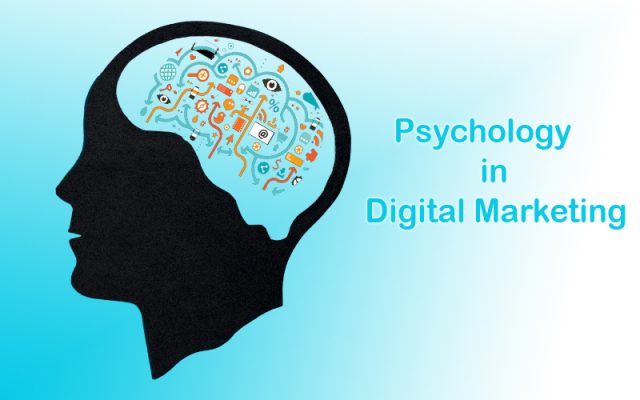Guide to Psychology in Digital Marketing

Psychology is anything but a cognizant science. It is fanciful to attempt to comprehend it completely. 8 billion individuals on this planet mean 8 billion mental varieties. Here, we are taking a gander at 4 proficient habits by which a brand can claim better to the audience by wrapping its strategy in the savvy of human psychology. Psychology and marketing go connected at the hip. This is a verifiable truth. Consider digital marketing a chess game. You attempt to take the correct actions with the correct devices. Even though your strategy is the ruler, commitment is the sovereign. What’s more, we as a whole realize who has the advantage in chess. The Queen.
Commitment is central in marketing, digital or conventional. Particularly in digital because of the gigantic measure of content and products that are only a click or contact away. Feelings should drive your commitment endeavors, not keenness. This is actually why David Packard said: “Marketing is too critical to possibly be left to the marketing division.” Weaving your strategy with the threads of wisdom from psychology can mold a compelling marketing approach. Allow this guide to show you a few notable strategies turned with psychology that work.
Anchoring Effect
An example is a point at which an advertisement shows a discounted cost. You probably won’t have an idea about the original cost. In any case, giving you an incentive of saving can trigger that buying unresolved issue the click.
Social Proof

Everybody needs validation. Not “wants”, yet “NEEDS” validation and approval. By providing testimonials and reviews, you are uncovering that they are not alone if they purchase a particular product or avail of that particular service.
Scarcity
Execute the ad or campaign so that the viewer should feel that if they lose another second, they are going to botch this chance. And that the chance is too large to be missed.
Instant Gratification
Avoid long, drawn-out measures that include many steps before conversion. Instant gratification is what everybody wants. Keep the cycles basic. A genuine example is Facebook lead generation. If a prospect clicks on the ad, the majority of the necessary details are already outfitted by Facebook itself. The massive database of personal information they possess is to be thanked for this.
Commitment Hierarchy
Start with small demands. For example, asking for their first name or email address. At that point gradually continue to tasks that require greater commitment like a purchase. The above-referenced tactics are demonstrated to work productively whenever utilized in the correct setting, in the correct sense, and with the correct style.
Now, let us take a gander at the exemplary implementations of general psychology to draw in more customers.
The Possibility Paradox
Give your audience the advantage of potential outcomes. Of decision. A wide range of decisions can decidedly influence your campaigns however overdoing it is a bumble. Take Flipkart for instance. Even though they have a huge number of products, they manage to target and offer the most relevant products to any given portion of the audience. Hardly any takeaways from this approach are:
- Downplay the central issues while emphasizing them.
- Anything over 2 clear paths to follow should be viewed as a faux pas.
Bridging the Information Gap
There is forceful emotional strife that individuals experience when there is a void between what they know and what they want to know. Marketers can utilize this space of blankness by nestling their content in it. This blankness is general curiosity and some ignorance. Extinguish their curiosity, earn their trust. It’s basic. Give the audience intentional information. Decorate it with a juggernaut of a heading. And make them feel like that’s all they need throughout everyday life.
Exercise Emotions
There is one thing to brag about the technical superiority of your product or service. It is another thing to talk about the accommodation it caters to and how it would make the existence of the purchaser easier. Antonio Damasio, in his book ‘Descartes Error,’ states that feeling is an inevitability to each choice an individual makes. Buying is a choice and the emotional factor can greatly lubricate it. Allow us to think about a case of the Gods of marketing, Apple. At the point when Jobs introduced the original I-unit, it had the technical advantage of 5 gigabytes of memory in a small gadget. Instead of boasting about it, Apple essentially said “1000 tunes in your pocket”. Divine beings for a reason.
A Study in Cognition
Grounded cognition marries fundamental cognition to deliver insight, action, and introspection. It recommends that you incorporate a story into your strategy. Individuals will in general ignore or fail to remember raw facts and figures however will associate more with a story. Toss in setting, instances, humor, and elements of interest to grasp your audience into converting the way you want them to. Speak to look for. Speak in a relatable, personal manner. Make individuals empathize with the brand.
The approach of tactics referenced here isn’t, in any sense, ultimate. It may not be the beginning. It may barely have scratched the surface. There are loads of different approaches and a plethora of new ways to be opened to psychology in marketing. The fact also remains that even the interpretation of these tactics may be unfinished. There could be a zillion different implications and angles to this.








